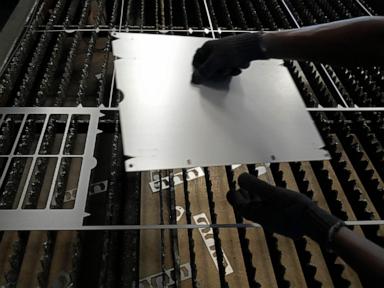

India's ambitious plans to expand its steel production capacity are facing scrutiny as concerns mount about the potential impact on the country's climate goals and global efforts to decarbonize the industry. A recent report by Global Energy Monitor (GEM) highlights the challenges posed by India's continued reliance on coal-based technologies in steelmaking, which could jeopardize its commitment to achieving net-zero emissions by 2070.
India, currently the world's second-largest steel producer, aims to increase its production capacity to 300 million metric tons by 2030, a significant jump from the current 180 million metric tons. This expansion is driven by the country's rapid economic growth and increasing infrastructure spending, leading to a surge in steel demand. However, the GEM report warns that this push for increased production, particularly through coal-powered methods, could result in an additional 680 million metric tons of carbon dioxide-equivalent emissions from the steel sector.
The Indian steel industry is already a significant contributor to the country's greenhouse gas emissions, accounting for approximately 12% of the total. The report suggests that this figure could double within five years if the planned expansion relies heavily on existing carbon-intensive processes. This poses a serious threat to India's overall climate targets, including its goal of achieving net-zero emissions by 2070.
Astrid Grigsby-Schulte, project manager of the Global Iron and Steel Tracker at GEM, emphasizes the critical role India plays in global steel decarbonization efforts. "India is now the bellwether of global steel decarbonization," she stated. "If the country does not increase its plans for green steel production, the entire sector will miss an important milestone. So goes India, so goes the world."
The report highlights that Indian steel producers generate 2.55 metric tons of carbon dioxide per ton of crude steel produced, which is 38% higher than the global average of 1.85 tons. This disparity is largely attributed to the dominance of coal in the sector, with 85% of the energy used in steelmaking coming from coal. Specifically, coal-based blast furnaces account for 69% of the steel capacity currently under development, while electric arc furnaces (EAFs), which offer a less carbon-intensive alternative, make up only 13%.
The GEM report estimates that investments in coal-powered steelmaking and reliance on emissions-intensive blast furnaces could lead to over US$187 billion in stranded assets, as the world increasingly shifts towards greener technologies. Several pathways exist for India to decarbonize its steel industry, including transitioning to EAFs powered by renewable energy, utilizing alternative fuels like green hydrogen and biomass, and implementing carbon capture, utilization, and storage (CCUS) technologies.
The Indian government has set ambitious targets for renewable energy production, aiming to reach 500 gigawatts of clean power by the end of the decade. The nation has also made significant strides in solar energy, surpassing 100 gigawatts of installed capacity recently. However, integrating these renewable energy sources into the steelmaking process remains a key challenge.
To align with its climate goals, India needs to prioritize the adoption of green steel technologies and reduce its reliance on coal. This transition will require significant investments, supportive government policies, and collaboration among industry stakeholders. Financial assistance and incentives for adopting cleaner production methods will be crucial to encourage steelmakers to embrace sustainable practices.